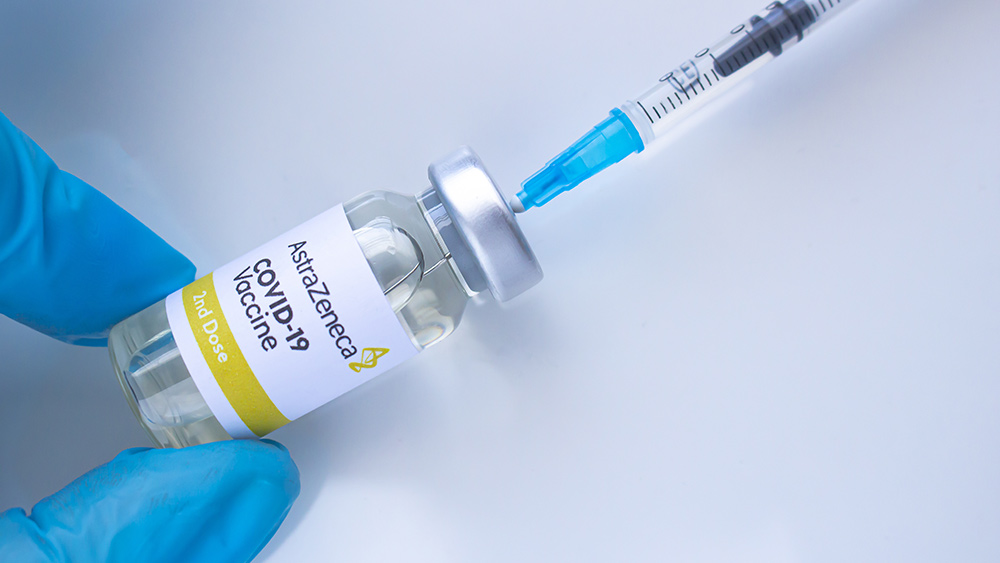A stronger heart, a healthier body: Cardiorespiratory fitness is key to lowering your risk of heart disease, advise researchers
05/20/2019 / By Michelle Simmons

It’s known that a lack of exercise and a sedentary lifestyle can increase one’s risk of diseases, including cardiovascular disease. On the contrary, regular physical activity can reduce the risk of health problems. This fact is supported by a new study published in the European Heart Journal. Researchers from the Norwegian University of Science and Technology found that cardiorespiratory fitness can lower the risk of heart disease, stroke, and premature death. Cardiorespiratory fitness refers to the ability of the heart, lungs, and vascular system to deliver oxygen efficiently to muscles.
In the study, the researchers looked at the associations between cardiorespiratory fitness and cardiovascular disease in a healthy population. They studied 4,527 adults with no history of cardiovascular or lung disease, cancer, and hypertension, or use of antihypertensive medications. To measure the fitness levels of the participants, the researchers used VO2 peak, the maximum quantity of oxygen the body can take in during exercise. It is also considered as one of the most accurate methods for measuring cardiovascular fitness.
By the end of the 10-year study, 147 participants had heart attacks or had developed chest pain or discomfort due to coronary heart disease. The results also showed that individuals with increased VO2 peak — or those with increased physical fitness — were less likely to develop coronary heart disease. On the contrary, those who were less fit, with low oxygen uptake, were at an increased risk of developing heart disease and dying early.

In addition, the researchers saw that for every 3.5 point-increase in fitness, the risk of heart attack or angina drops by 15 percent. Moreover, the top 25 percent of the fittest participants had only 48 percent risk compared with participants in the lowest 25 percent. Overall, these findings suggested a link between cardiorespiratory fitness and heart disease risk.
Another study finds cardiorespiratory fitness lowers coronary heart disease risk
A study published in Mayo Clinic Proceedings has also found that moderate-to-high levels of fitness can counteract the adverse effects of a high triglyceride/high-density lipoprotein (TG:HDL) ratio – both of which are strong indicators of death from coronary heart disease.
In the study, the researchers examined a total of 40,269 men who received a comprehensive physical examination between 1978 to 2010. The participants underwent a maximal treadmill exercise test to determine their cardiorespiratory fitness level. Their blood TG:HDL ratio was also measured. A lower ratio indicates that insulin is working well, while a higher ratio suggests insulin resistance. Higher ratios also suggest an increased risk of future prediabetes, Type 2 diabetes, and cardiovascular disease.
The researchers follow the participants for an average period of 16.6 years, and during which, 556 deaths due to coronary heart disease occurred. Participants with moderate to high levels of fitness and lower values for the TG:HDL ratio were less likely to develop the disease than those with lower fitness levels and higher TG: HDL ratio. From these findings, the researchers concluded that knowing your fitness level and TG:HDL ratio provides much more information about coronary heart disease risk status than just knowing one or the other.
How exercise improves heart health
Aerobic exercise, such as walking, jogging, cycling, dancing, running, and swimming, is a type of exercise good for the heart. This causes you to breathe more deeply, making the heart work harder to pump blood. When the heart pumps more blood, more oxygen is delivered to your body. With more oxygen, the body works more efficiently. Aerobic exercise also increases your heart rate.
In general, exercise can also lower blood pressure, reducing the risk of heart disease and levels of low-density lipoprotein (LDL) or “bad” cholesterol, as well as increasing levels of HDL or “good” cholesterol. LDL cholesterol can clog the arteries and cause a heart attack, while HDL cholesterol helps prevent a heart attack by removing fatty deposits out of the arteries.
Sources include:
Submit a correction >>
Tagged Under:
cardiorespiratory fitness, cardiovascular disease, coronary heart disease, exercise, fitness, Heart, heart attack, heart disease, heart health, oxygen uptake, prevention, research, risk reduction
This article may contain statements that reflect the opinion of the author


















